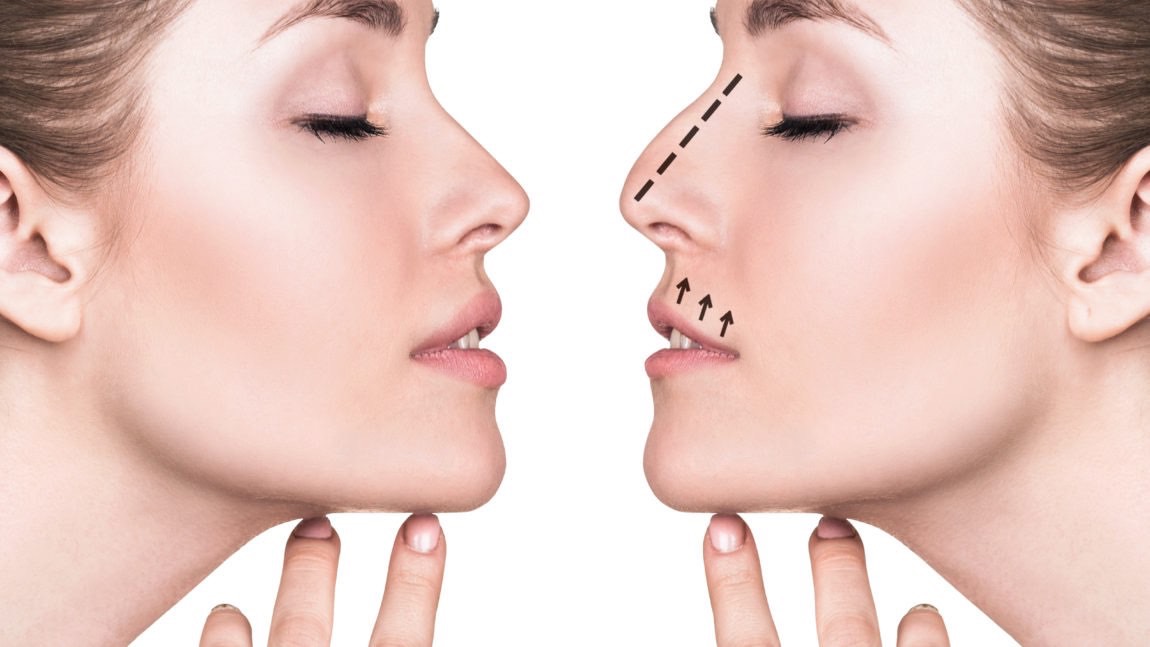Rhinoplasty Surgery/Nose Job

What is a Rhinoplasty Procedure?
Rhinoplasty, commonly called as a nose job, is a surgery that is performed on the patient to correct an array of imperfections of the nose. A deviated septum or a small nasal hump is one of the most popular reasons why people undergo this procedure. A fairly large number of men and women of all ages are using this surgical technique to enhance their physical appearance that helps in enhancing their overall appearance and make them feel better and content of their looks.
In this procedure, small incisions are made on the nose of the patient to allow the surgeon to pull the skin away from the bone that lies underneath. The bone along with the cartilage of the nose is shaped to accomplish the desired look; the decision of the surgery is made on the basis of the patient's expectations and suggestions of the operating surgeon. This surgery calls for an experienced professional, one who has the expertise and precision to bring a desirable change in the nose of the patient that fits the rest of the face.
What to expect from the procedure?
In order to have an optimal experience with the Rhinoplasty surgery, the concerned patient ought to have the right set of expectations to be prepared.
It is imperative to remember that the final outcome of this procedure may not show up for up to 6 months or two years following the surgery. A multitude of variables including, nature as well as the thickness of the patient's skin, the nature, and thickness of the tissues and the body's way of healing can impact the final outcome.
Despite being ranked as one of most commonly performed procedures, rhinoplasty may require a surgical revision to achieve a higher refinement of results in some cases.
During the process of healing, one can expect:
1. Discomfort of a mild or moderate degree: On experiencing discomfort, you should take the pain medications as prescribed by the doctor or surgeon. Taking extra-strength Tylenol for a few days after the surgery can relieve the discomfort or pain to a large extent.
2. Black and blue discolouration: usually, black and blue discolouration can appear in patients who have undergone rhinoplasty surgery. However, this discolouration may fade in two or three weeks. The swelling resulted from the procedure is usually at its worst during the first 48 hours of the surgery. After a week's time, it subsides on its own. Till the time the discolouration persists, you may use makeup to camouflage it. But, make sure to consult your plastic surgeon before using makeup or creams of your choice.
3. Bruising: The extent of bruising varies from patient to patient. Generally, it takes around two to three weeks to fade. You need to take rest and Vitamin C orally for two to three weeks after rhinoplasty in order to minimize bruising.
4. Bleeding: Your nose may bleed for several hours. The bleeding is followed by drainage of a thin fluid that normally lasts for a few days. The nosebleed caused can be triggered by sudden movements of episodes of anxiety. Medications need to be taken to stop the bleeding.
5. Shortness of breath: You may experience shortness of breath for three to seven days post surgery, which may lead to a feeling of "head cold" and dryness of the mouth.
6. Induration: Induration is the result of a normal process of healing and scar tissue formation, which can last up to six months.
7. Asymmetry: The two halves of the nose being operated upon may appear asymmetrical. After the healing process finishes, the degree of asymmetry will be less noticeable and will lose its aesthetic significance eventually.
8. Scars: Scars can appear due to the incisions made during the surgery. Such scars can fade in a few weeks period. Avoid direct exposure to Sun and use sunscreen to prevent scarring. You can use Vitamin E oil to apply on the scars.
Having proper expectations and prior preparation of cosmetic procedures such as rhinoplasty, the rate of success increases.
Get a nose treatment today!





